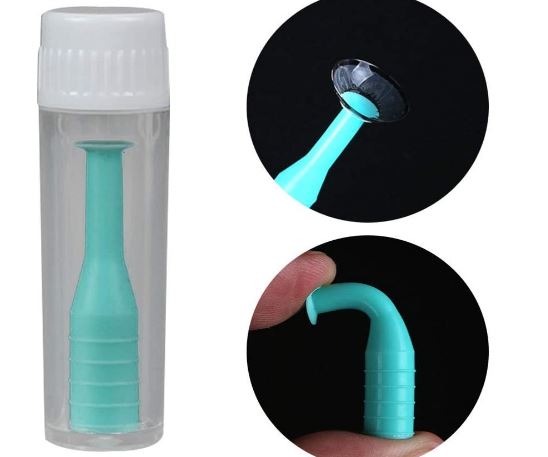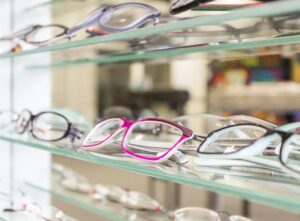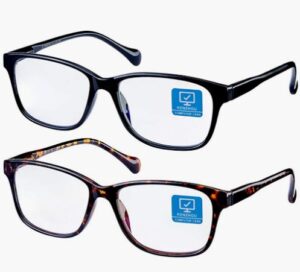Rigid gas-permeable lenses called ortho k lenses are typically worn at night. It flattens the cornea, reshapes it, and temporarily corrects nearsightedness. It thus serves to replace the need for contact lenses or glasses during the day. How do ortho k lenses work? Who are ortho k lenses for? What are the pros and cons of ortho k lenses? Continue reading, you will find the answer.
Table of Contents
What is Ortho-k ortho k Lenses?
While you’re sleeping, adjust your vision.
Your vision is corrected while you sleep with ortho-k lenses. Put your ortho-k lenses in before going to bed, take them out in the morning, and you’ll awaken to a world of crisp, natural vision. EyeDream is another name for Ortho-k.
How Does Ortho-k Lenses Work?
The majority of the eye’s focusing power is provided by the cornea, a transparent, dome-shaped window in the front of your eye that directs light onto the retina. Its tissue is incredibly adaptable.
Using a device called a corneal topographer, your ophthalmologist will map and measure the corneal surface and create a lens specifically for your eye. By reflecting light off the eye’s surface, the cornea map is produced. You don’t feel any pain, and the machine doesn’t touch your eye. Your ophthalmologist can see the contours of your cornea on the corneal topography map.
By flattening the cornea’s center, the lenses alter how light is bent as it enters the eye. The majority of orthokeratology lenses are put on at night to flatten the cornea and taken off in the morning. These rigid, gas-permeable overnight lenses are strong enough to reshape the cornea while still letting oxygen through to keep your eye healthy.
The cornea remains temporarily flattened after ortho-k lenses are removed, allowing vision correction without the use of glasses. Your eyes will eventually return to their original shape and the refractive error will recur if you stop wearing the lenses at night. To maintain vision correction, you must continue wearing the lenses frequently.
Who is Ortho-k Lenses For?
Children particularly benefit from it.
Nearly everyone can benefit from ortho-K lenses, but kids are the best candidates. This is due to the fact that these young patients are not good candidates for LASIK surgery. But with Ortho-K lenses, children who don’t want to wear glasses frequently get fantastic results. We now know that this therapy, which is emerging as the industry standard for myopia management, is one of the most efficient ways to stop children’s myopia from getting worse. Other qualified candidates include those with prescriptions that fall within a predetermined range and those who require vision correction without corrective lenses, such as pilots, law enforcement officers, or athletes.
Myopia (nearsightedness) is primarily treated with ortho-k. In most cases, eyeglasses, regular contacts, LASIK, or PRK can also correct this vision issue. With the help of orthokeratology, some people can stop wearing their glasses and avoid wearing contacts all the time.
Sometimes ortho-k is advised to correct children’s vision. Even as they enter their 20s and adulthood, some children’s vision can continue to change. Surgery for vision correction, such as LASIK, is not advised until vision has stabilized. Although there isn’t any concrete proof, researchers are looking into the possibility that ortho-k might help children’s myopia develop more slowly.
What Can You Expect from Ortho-k Lenses?
The full benefit of orthokeratology may take two weeks or longer to manifest, though some people notice a noticeable improvement in their vision within a few days. Most patients who used ortho-k lenses in clinical studies with the Food and Drug Administration had a vision that was at least 20/40.
To see clearly until your prescription is the one you want, you might need to wear a series of temporary ortho-k lenses. To achieve the best vision correction, up to three pairs of orthokeratology lenses are typically worn one after the other. Use the same type of lens every night to maintain the correction once you’ve reached the desired prescription.
You probably won’t feel the contact lenses on your eyes until you nod off and get used to them. They typically get more at ease over time. When your corneas have reached the final desired curve, you will use a retainer lens as frequently as your ophthalmologist advises in order to preserve your vision.
What Are the Benefits of the Ortho K Lenses?
Safe, comfortable, and effective vision correction.

Overnight, the curvature of the eye is gently altered by ortho-k lenses. Sharp, the optical focus is produced in large part by the cornea. The slight alteration in corneal curvature that occurs when you first wake up is sufficient to give you a daylong vision that is clear and precise.
Additionally, it’s thought that refocusing light onto the retina’s periphery can halt the progression of short-sightedness in children.
Since its introduction in the UK in 2002, ortho-k has only ever been fitted by an optical professional. Numerous people’s lives have already been changed by this non-invasive, cozy, efficient, and secure method.
What Are the Disadvantages of Ortho-K Lenses?
Ortho K lenses are small and can be lost or broken if mishandled, requiring a replacement lens to be ordered in such mishaps. There may be some eye sensitivity during the initial days of Ortho K wear as the eyes get used to wearing rigid lenses.
Is Ortho K Lenses Safe?
Infection (microbial/bacterial keratitis) is linked to ortho-k and is more likely to occur. This risk is especially concerning for kids and teenagers because they might be less able than adults to practice good contact lenses and hand hygiene.
Infections in the eyes cause nearly a million Americans to visit the doctor each year. The use of contact lenses poses the greatest risk for infections. Eye infections can cause serious problems, such as permanent vision loss. This makes glasses, which can be used to correct the same conditions, safer than ortho-k. One of the reasons you should speak with an ophthalmologist before choosing ortho-k is for this reason.
You can wear orthokeratology lenses for an unlimited amount of time. You must visit your ophthalmologist for routine examinations. But ortho-k may be used for years if your eyes remain comfortable and healthy.
How Much Do Ortho K Lenses Cost?
Orthokeratology would typically be a choice of treatment. There are frequently other, less expensive, and more well-known ways to correct refractive errors, such as eyeglasses. However, there might be some situations where insurance would suggest and pay for ortho-k lenses. Depending on the kind and severity of the refractive error, the cost of ortho-k can vary significantly, including the cost of any post-lens fitting care. The typical price range for ortho-k is $1,000 to $4,000. It can cost between $300 and $500 per year to replace lenses, buy lens care products, and have follow-up exams.
Is It Painful?
Although it might seem painful, corneal reshaping is not. That’s because the reshaping is not the result of squeezing or “squishing.” Instead, it is caused by hydraulic forces. The cornea changes shape as a result of the lens’ formation of a fluid vault over the eye, which causes some areas of the cornea to absorb more fluid than others, temporarily resolving curvature issues.
What Are the Effects Can Last More Than a Day?
For the best results, patients should wear their lenses every night, but the results frequently last longer. In fact, after wearing Ortho-K lenses for one night, it’s typical for people to benefit from the corrected vision for up to two whole days. The lenses can be worn during the day, but because they are actually reshaping the cornea, they are more comfortable when worn at night. It’s generally more important to wear the lenses every night at first, while the reshaping takes
place. You might be able to wear them more frequently as your therapy advances.
Are Ortho K Lenses Worth It?
However, Ortho-K lenses frequently produce excellent results in children who don’t want to wear glasses. We now know that this treatment is one of the most effective methods of slowing down progressive myopia in children and is becoming the gold standard for myopia management.
Do Ortho K Lenses Work Permanently?
Ortho-k does not permanently correct your vision. To maintain clear vision throughout the day with ortho-k, which is temporary, the lenses must be worn every night.
While you’re sleeping, adjust your vision. Your vision is corrected while you sleep with ortho-k lenses. Children particularly benefit from ortho k lenses. Pay attention to the potential disadvantages, and use ortho k lenses safely.


